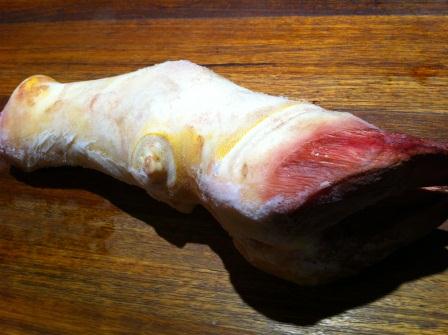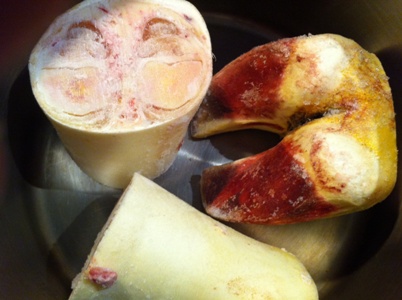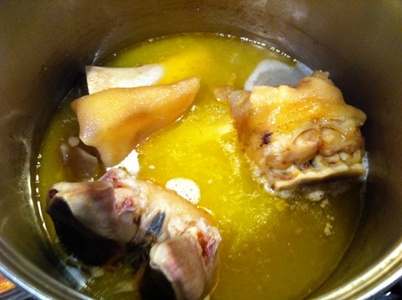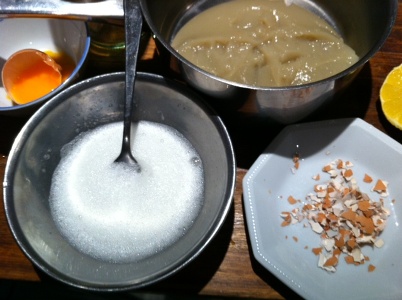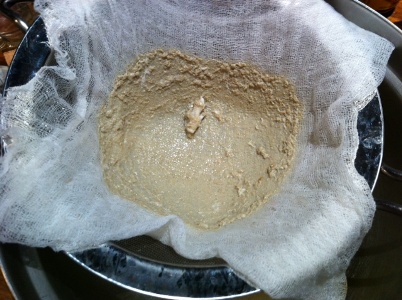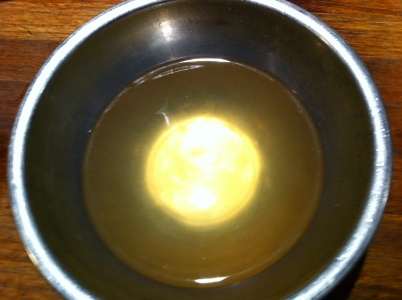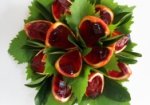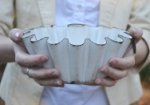Jellies were often savoury dishes, used to extend and preserve offcuts and left over meats. Brawn and presswurst are remnants of this craft. Jelly was also used to ‘sculpt’ sweet and savoury dishes, formed into whimsical shapes to look appealing at the table.
The art of jelly making
But jellies are not as simple and fun as they seem, one of the key philosophical points that artist Janet Tavener’s ‘Out of the mould’ exhibition at Vaucluse House demonstrated. ‘Forcing food to take on bizarre and convoluted shapes can be read as a metaphor for man’s obsessive attempts to control the inexorable power of nature.’ (Tracey Clement, 2010).
Flummeries
Sweet jellies would be both clear and solid coloured – known as flummeries, or the French term, blancmange, made with almond milk. 18th century cookbooks include dishes such as ‘fish ponds’, ‘moon & stars’, ‘hen’s nests’, even ‘bacon & eggs’ made with flummery.
Jelly moulds
Jelly moulds gradually eclipsed the ‘free formed’ style jellies, although some of us revisit the practice today, creating novelty jellies for children’s birthday parties (e.g. ‘frogs in a pond’). A variety of late nineteenth century copper moulds are on display at Vaucluse House as part of their batterie de cuisine. Decorative ‘ring’ moulds were used for jellies or flummeries. Once the jelly had set the centre would be filled with fresh fruit or whipped cream. They were also used to make moulded rice ‘casseroles’ or mashed potatoes with the centre filled with curry or ragout – a little serving trick my mother used as I was growing up in the 70s!
Making jelly
While making jelly is now a simple two step process it was once labour intensive and protracted, reserved for households that could afford the time and fuel for frivolity at the table. Until commercial production of gelatine was pioneered in the mid-nineteenth century, food could be set using isinglass, made from an extract from the swim bladder of a sturgeon, hart’s horn (i.e. deer horn) and calf’s feet. ‘Chinese’ gelatine, or agar-agar started to appear in colonial cookbooks towards the end of the nineteenth century; it had the distinct advantage of not needing cold temperatures to set. But most cookery books of the time indicate that calf’s foot jelly was still the most common form of gelatine in domestic cookery, for both sweet and savoury dishes. If the weather wasn’t cool enough for your dish to set, common practice was to place your mould into a bucket and suspend it in the well (usually located close to the kitchen) just above the waterline.
A ‘receipt’ for calf’s foot jelly
An 18th-century ‘receipt’, as recipes were then known, begins:
Put a gang of calf’s feet well cleaned into a pan with six quarts of water, and boil them gently till reduced to two quarts. Then take out the feet, scum off the fat clean, and clear your jelly from the sediment. Beat the whites of five eggs to a froth [to clarify – see video above] …
The resulting stock is then flavoured with fortified wine, sugar and lemon juice, and ‘a glass of French brandy will keep the jelly form turning blue in frosty air.’ Elizabeth Raffald, 1769. The experienced English housekeeper for the use and ease of ladies, housekeepers, cooks, &c. written purely from practice (facsimile) Southover Press, East Sussex 1997 pp.93-94.
But wait – a ‘gang’ of feet? Not knowing exactly what a ‘gang’ would be, I deduced it would be a set of four. Further research on old usage of words has revealed that a ‘gang’ is indeed a ‘set’ so given that calves have four legs, my instinct was correct.
I trialled this recipe using only one calf’s foot, which yielded one cup of clarified gelatin (see process images below) so a ‘gang’ would yield about a litre. As you’ll see, those little Aeroplane packets save us a lot of work and may also explain why jelly has become a somewhat trivialised rather than revered food.
Calf’s feet jelly
Ingredients
- 4 calves' feet (each cut into three or four pieces)
- 2 egg whites, whipped until frothy
- 2 eggshells (crushed)
Note
This is the foundation gelatin concentrate which is then flavoured and coloured to make jellies. Watch the video of 'the Cook' making this recipe in the kitchen at Vaucluse House.
Calves' feet can be difficult to find in conventional butchers shops, but can be purchased in suburbs that cater for Korean and Chinese communities, such as Campsie or Ashfield in Sydney. More than just the hoof, a calf's 'foot' can be up to 30 cm long, and as they are nearly all bone, ask the butcher to cut each one into three or four pieces so they'll fit into a domestic pot (albeit a large one!).
Making gelatine this traditional way is at least a two-day process.
Directions
Calf’s foot jellies remained in cookbooks well into the twentieth century, generally as ‘invalid’s’ food, as the resulting jelly is almost pure protein and completely fat free and was seen as nutritious and easy to digest. As it turns out, calf’s-feet jelly is not the ‘wonderfood’ it was believed to be. Although almost pure protein, it is not a ‘complete protein’ food as it lacks tryptophan, an essential amino acid, but jelly remains a staple hospital food.
For more information on isinglass and other jelly making processes: Historic Food: Jelly, Flummery and Creams
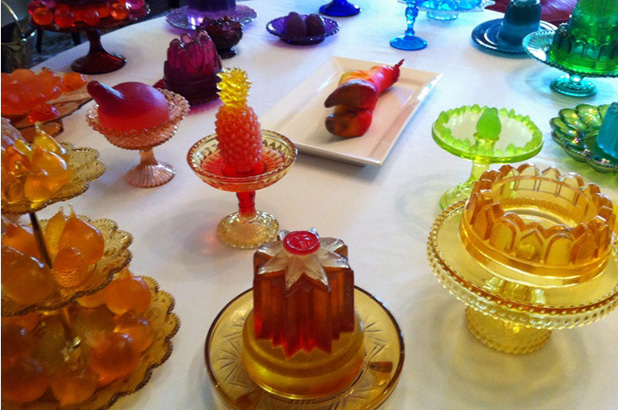
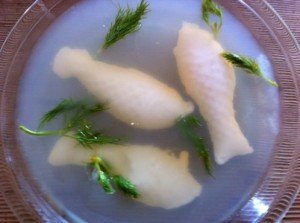
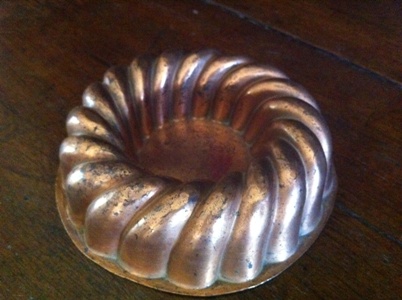
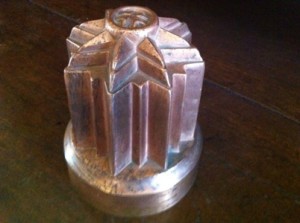
 Print recipe
Print recipe